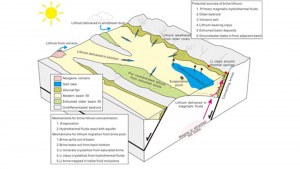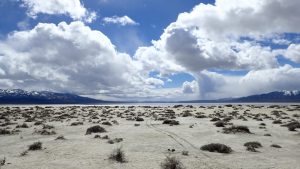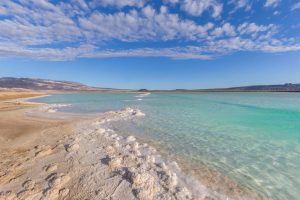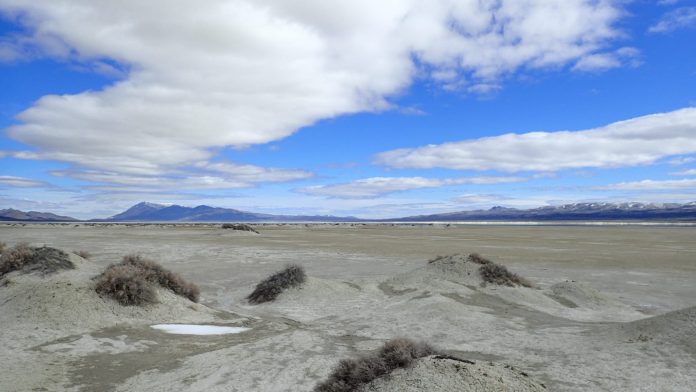Leading mineral exploration company Iconic Minerals is advancing its highly prospective lithium brine properties in Nevada to reinforce supply chains in the US and abroad.
Lithium, often referred to as white gold, has become one of the hottest commodities globally in recent years, as this critical mineral is essential in a range of technologies, such as producing batteries for electric vehicles (EVs) and consumer electronics.
As global EV production is ramping up to meet climate targets, the demand for lithium is growing exponentially, with countries worldwide scrambling to secure robust supply chains for this critical mineral. Estimates put the global market for lithium at $7bn in the year 2022, and some project that the market will reach more than $22bn by 2030. Demand is forecasted to outpace supply in 2028 and onwards (USGS).
However, with the lithium market dominated by Australia, China, and South American countries such as Bolivia, Argentina, and Chile, which are ideally situated in the ‘Lithium Triangle’, the United States must identify sizeable and reliable lithium resources to fuel their EV ambitions.

Lithium brine properties in Nevada have emerged as a promising solution to the US’ lithium needs, with several of Nevada’s large, deep basins demonstrating exceptional lithium potential.
Despite this tremendous potential, there is currently only one producing lithium brine play in Nevada. Albermarle has the Silver Peak lithium brine operation, which has been in production since the 1960’s, however, the production at Silver Peak could be nearing the end of its brine well life, leaving opportunities for other brine plays to take its place.
Iconic Minerals aims to transform these lithium fortunes, possessing an impressive portfolio of lithium brine properties in Nevada, consisting of its Smith Creek Valley and Grass Valley properties.
Both properties hold significant potential to meet the US’ lithium demands because if lithium is proven to be held in the brine, they could become two of the largest resources in the country. They also are not impacted by water usage rights.
Iconic has a proven track record having recently finished merging its Bonnie Claire lithium property with Nevada Lithium, which has acquired 100% interest in the project in May 2023. The Bonnie Claire has a Preliminary Economic Assessment (PEA) yielding a Net Present Value (NPV) of £1.5bn.
Iconic’s same management and technical team who were responsible for discovering the Smith Creek and Grass Valley projects, will be advancing the properties into economic lithium brine plays.
Smith Creek Valley lithium property
The Smith Creek Valley project is one of the most exciting lithium brine properties in Nevada, located in the west of the state and just 25 miles southwest of Austin, Nevada.
The Smith Creek Valley drainage basin covers an impressive 582 square miles consisting of Tertiary volcanic units. These felsic, siliceous, acidic volcanic rocks hold sizeable concentrations of lithium which were deposited over the past several million years.
According to Richard Kern, Iconic’s President, Chief Executive Officer, and Director, the property’s potential for lithium is boosted by a geothermal system on the west side of its property.
Richard Kern, CEO of Iconic, commented: “Both the Smith Creek and Grass Valley lithium projects have large brine zones indicated by the Magnetotellurics (MT) geophysics we have conducted. Additional MT and Seismic surveys to define location and possible feeder faults prior to drilling using a mud/rotary rig will allow testing to great depth. We are excited to begin this deep brine exploration play.”

High angle faults crossing the basin brought in low pH waters, which dissolved the lithium from the sediments and created brine. A low pH is indicative that the lithium has a higher likelihood of precipitating into the brine.
Several hot springs at Smith Creek have the highest lithium values found due to remobilising lithium brine from deep in the valley. Sediment surface samples taken near the hot springs showed lithium concentrations as high as 470 parts per million (PPM), which is considered strongly anomalous.
Smith Creek lithium resource potential
Geophysical data, including gravity and magnetic surveys, has revealed that the Smith Creek Valley deepens with a sub-basin potential alluvial fill of up to 5,500 feet. A Magneto Telluric (MT) resistivity survey identified a significant low resistivity zone at depths ranging from approximately 1,300 to +3,000 feet, indicating the presence of brine.

Iconic possesses the required permits to commence its next stage of drilling, however, the company is first preparing additional MT and seismic gravity surveys to further identify the extent and concentration of lithium bearing brine to optimise its chosen drill targets.
Grass Valley lithium property
Iconic’s Grass Valley lithium property is situated 36 miles Northeast of Austin, Nevada. The project spans an area of 80 km2 and includes 997 placer claims.
Similar to Smith Creek Valley, Grass Valley is also a large area of lithium bearing tuffs within the basin, which through its high angle faults crossing the basin, has brought in the desired low pH waters, precipitating the lithium from the sediments and creating brine.
Grass Valley lithium exploration results
The testing of several thermal hot springs at Grass Valley have resulted in the highest lithium values found due to remobilising lithium brine from deep in the valley. The previous exploration of Grass Valley included surface sampling, an MT survey, and one drill hole. Sediment sampling programmes conducted for lithium confirmed the presence of anomalous lithium values, with the highest value being 510 ppm and is associated with the thermal hot spring.
Geophysical surveys and compilations were carried out to define the sub-surface shape of the Grass Valley basin and identified a significant low-resistivity zone within the enclosing alluvial sediments on the eastern side of the basin. A Magneto Telluric (MT) resistivity survey identified a significant low resistivity zone at depths ranging from approximately 1,300 to +4,000 feet, indicating the presence of brine.
 The one core hole drilled in the project area, however, requires additional MT and gravity seismic surveys to define the extent of the brine and possible fault controls. Deep mud/rotary drill holes will follow to allow for the brine to be tested of which Iconic holds the drilling permits for this future exploration.
The one core hole drilled in the project area, however, requires additional MT and gravity seismic surveys to define the extent of the brine and possible fault controls. Deep mud/rotary drill holes will follow to allow for the brine to be tested of which Iconic holds the drilling permits for this future exploration.
With such promising lithium brine properties in Nevada, the future is exciting for Iconic Minerals as it strives to capitalise on the US’ growing lithium demand and help pioneer a domestic supply chain.









